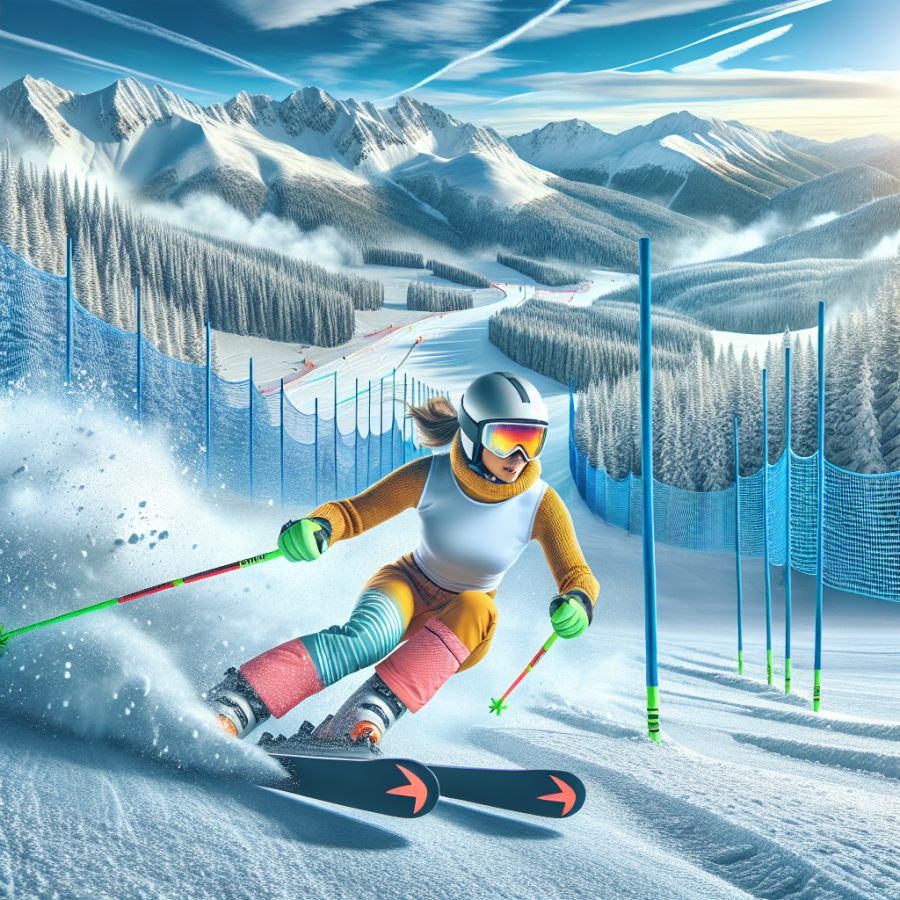Enhancing Speed and Precision: Training Tips for Competitive Slalom Skiers
As competitive slalom skiers aim to shave milliseconds off their time while navigating through the gates with agility and precision, certain training tips can prove to be game-changers. Here are several methods to enhance speed and precision that should be incorporated into a training regimen.
Firstly, it is essential to develop a solid foundation of skiing skills. Frequent drills that focus on balance, edging, and pressure control can improve overall technique, which is the cornerstone of a successful slalom performance. Skiers should practice on varied terrain to adapt to different slope conditions.
Secondly, gate training should be approached with a strategic mindset. Skiers must learn to read the course and anticipate their moves in advance. Visualization techniques can aid in memorizing the course layout, leading to smoother transitions and better timing through the gates.
Strength and conditioning cannot be overstated. Core strength is particularly vital for maintaining posture and balance through turns. Plyometric exercises that enhance explosive power will contribute to quicker starts and rapid direction changes.
Agility training is also crucial. Activities like slalom drills with poles or cones can improve quick reaction times and the ability to make tight, controlled turns.
Mental toughness training is another key factor. Slalom skiing under competitive pressure requires a calm and focused mind. Techniques such as mindfulness and breathing exercises can help maintain composure during races.
The use of video analysis has become a staple in modern training. Reviewing runs in slow motion can help identify areas for improvement, from the carving of turns to the tucking position.
Finally, proper equipment maintenance and selection tailored to the skier's style will ensure that no speed is lost due to technical malfunctions or poor gear choices.
By integrating these training tips, slalom skiers can fine-tune their performance, enhancing both speed and precision, which are paramount in the art of ski slalom racing.
Read also:
The Timeless Game: Exploring Battledore and Shuttlecock
Perfecting Your Turns: Techniques for Navigating the Gates
Perfecting your turns on a slalom course is a critical skill that can greatly affect your performance in ski racing. Understanding and mastering the different techniques for navigating the gates is essential for any ski racer looking to improve their times and succeed in the sport. Here are some advanced tips and techniques focused on how to perfect your turns in slalom racing.
1. **Early Visualization and Course Inspection**: Before you even put on your skis, take the time to inspect the course. Visualize each turn and set a plan for your line—this pre-race strategy can play a major role in how well you execute your turns.
2. **Stance and Balance**: Proper stance is critical when it comes to making effective turns. Maintain a balanced, athletic stance with your weight centered over your skis. Your knees should be bent and your body slightly leaning forward, which allows quick reactions and agile movements through each gate.
3. **Anticipation and Timing**: The timing of your turn initiation is crucial. Begin your turns just before reaching the gate to ensure that your skis are carving through the apex and you're in the right position to transition smoothly to the next turn.
4. **Carving vs. Skidding**: To maintain speed, focus on carving your turns rather than skidding. Carving involves setting the ski on its edge and following the arc that the sidecut naturally creates, while skidding slows you down and can make you lose control. Practice rolling your knees into the hill to carve effectively and maintain momentum.
5. **Pole Planting for Rhythm**: A rhythmic and well-timed pole plant can aid in the execution of quick, sharp turns. It acts as a physical and psychological trigger to initiate the turn, helps in maintaining balance, and provides a rhythm to your skiing.
6. **Dynamics of the Turn**: Understand the dynamics of the turn—there's an initiation phase, a pressure phase where you’re bending the ski for maximum edge grip, and a release phase where you transition to the next turn. Managing your pressure during these phases can significantly affect your speed through the course.
7. **Absorbing and Extending**: Slalom courses often have quick changes in terrain and verticality. Learning to absorb bumps and extend into dips will keep your skis on the snow and your line tight. This requires ankle, knee, and hip flexion, with reactive extension where needed.
8.




